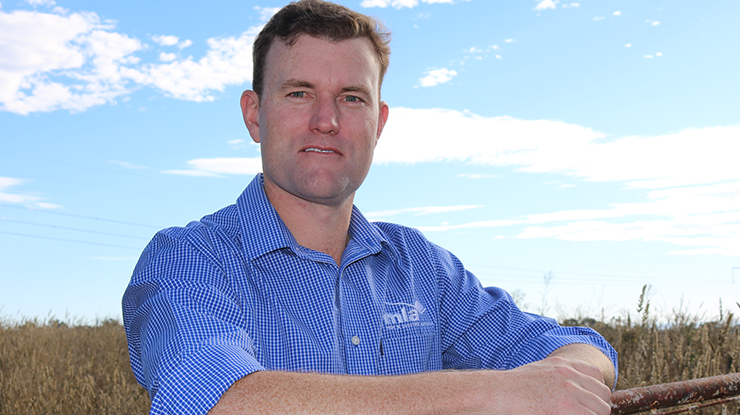
R&D into improved genetics and reproduction rates key to greater profitability and sustainability
OPINION EDITORIAL
Michael Crowley, MLA General Manager – Research, Development and Adoption
Enabling sheepmeat producers to balance yield and eating quality traits through genetic improvement is one of the key areas MLA is focused on to help improve flock performance and profitability.
For Australia’s sheep industry, using genetic improvement to achieve this goal is a process facilitated by the Sheep Genetics program, managed by MLA.
Australian Sheep Breeding Values (ASBVs) and indexes reported by Sheep Genetics highlight genetic potential and predict the performance of the next generation of progeny, helping direct on-farm decisions that will see performance and productivity improve.
Over the past 15 years, we’ve seen positive improvements in genetic trends for yield-based traits such as growth and muscling; however, it has had a negative impact on eating quality traits, with intramuscular fat and tenderness decreasing.
In response, three terminal sire indexes are available to assist with balanced selection for yield and eating quality traits. These provide producers with the tools to not only improve yield but also improve, or at least maintain, eating quality over time, ultimately breeding for the consumer.
Producers are now submitting data into the Sheep Genetics database. The data demonstrates that producers are getting positive responses in both yield and intramuscular fat by using some of these balanced indexes for genetic selection.
Meat Standards Australia (MSA) consumer research shows that an increase in intramuscular fat positively impacts lamb eating quality, as well as an increase in consumer willingness to pay for improved eating quality.
Feedback from consumer taste testing panels in Australia, the United States, and China, indicate consumers are willing to pay twice as much for a ‘Premium’ five-star piece of lamb, compared to a ‘Good’ everyday three-star piece.
There is a clear incentive to strive to push up eating quality so producers can potentially capitalise on higher prices paid by consumers.
Producer adoption of tools such as genetic selection to inform breeding decisions is just one area MLA is focused on in the sheep R&D space.
Sheep Reproduction Strategic Partnership
To help producers profitably and sustainably increase lamb production through increasing weaning rates and lamb survival, MLA has recently established the Sheep Reproduction Strategic Partnership (SRSP).
The SRSP will involve industry organisations working collaboratively to develop larger, long-term programs of research, development and adoption work that focus on a single priority and address a common goal delivering greater benefits and impacts for the industry.
The aim is to move away from stand-alone, ad hoc projects, and work towards an agreed vision, ensuring producers can successfully implement practical R&D solutions for their farm businesses to improve reproductive performance and weaning rates. This will not only increase productivity but improve animal health and welfare outcomes.
The SRSP is using existing structures including the Red Meat Panel to achieve its objectives, as part of the regional consultation process.
MLA called for expressions of interest to be involved in the SRSP in September 2019 as part of our annual RD&A investment call. In response, we received 24 expressions of interest from stakeholders within Australia and overseas, demonstrating the overwhelming desire for a collaborative approach to this issue.
Following initial start-up meetings and the formation of an industry management committee, a wider stakeholder workshop will be held in June to focus on building collaboration between partners to address foundational strategic objectives.



